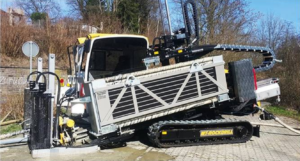In the times of real fast technological development, especially with the increasing role of fiber optic internet, the correct and effective layout of telecommunication infrastructure becomes a crucial aspect of overall infrastructure. It forms the foundation for future expansion and is a stage that significantly influences many aspects. Introducing fiber optic cables to new locations requires operators to lay new telecommunication infrastructure or utilize existing ones. Into that infrastructure is needed introduced new cables – manually or using devices such as fiber optic blowing machines like the Blue Dragon Jet. That is how the additional telecommunication connections are created. Of course, it is possible to dig up existing infrastructure, modify its layout, or lay it anew, but this involves not only a substantial financial investment but also significant social costs, such as disrupted sidewalks, roads, detours, traffic problems, and more. Such actions are far from the trenchless technology promoted in recent years.

The essence of telecommunication infrastructure
Telecommunication infrastructure is the fundamental framework that secures cables, including fiber optic cables, from external environmental influences. Additionally, it allows hiding aerial wires that can disrupt the landscape. Properly laying telecommunication infrastructure is crucial for ensuring the reliability and durability of telecommunication networks. The construction of telecommunication infrastructure is not just about the “here and now”; it’s a vision of the future utility of the built infrastructure in the context of potential network expansions. Therefore, a proper construction strategy, knowledge, skills, and technology are essential for making telecommunication infrastructure a solid foundation for communication networks. What are the stages of preparing a good telecommunication infrastructure layout project?
- Planning and site reconnaissance stage.
The first stage involves precisely planning the telecommunication infrastructure route and more. It includes determining how many pipes/microducts need to be laid to ensure adequate data throughput, as well as how many empty pipes/bundles of microducts leave for easy expansion of the network with additional cables without the need for extra earthworks. That kind of smart planning ensures that in the future, we can just blow in another cable and connect it to the already active network.
Variable terrain conditions, soil types, and potential obstacles such as existing infrastructure or buildings should be taken into account. Proper terrain analysis helps avoid problems with future modifications and minimizes disruptions during project implementation.
- Selection of appropriate materials.
Materials used for telecommunication infrastructure construction should have high durability, resistance to mechanical damage, and corrosion. Special attention should be given to the use of materials resistant to atmospheric and chemical conditions, ensuring the long life of the infrastructure. The choice of materials can vary depending on the climate or terrain characteristics.
- Planning the least invasive telecommunication infrastructure laying technique.
During project implementation, using modern telecommunication infrastructure laying techniques is crucial for achieving optimal results. Ideally, telecommunication infrastructure should be laid with future considerations during the construction of new buildings, neighborhoods, companies, or industrial parks. In such cases, the terrain is prepared for invasive work, and there is no need for additional exploitation. However, this is not always possible. Techniques such as horizontal drilling or computer-controlled excavators allow precise telecommunication infrastructure laying without the need for large excavations, reducing the impact of work on the surroundings.

- Proper protection of pipes and fiber optic cables within them.
During telecommunication infrastructure laying, special attention should be paid to protecting fiber optic cables. The use of suitable pipes, shields, and systems protecting against crushing or mechanical damage ensures the long-term reliability of the telecommunication network. The technique of burying the infrastructure is also crucial. Care must be taken not to displace the buried pipes. The first layer of soil in direct contact with the pipes must be free of stones, debris, and the like. Ideally, it should be sifted sand or soil. It is essential to place a signaling tape at the appropriate depth in the trench. Special caution should also be taken when mechanically compacting the soil in the trench to avoid displacing the pipes at the bottom.

- Consideration of the future telecommunication infrastructure.
The dynamic development of technology necessitates continuous adaptation of telecommunication infrastructure to new requirements. Therefore, telecommunication infrastructure laying should consider the possibility of future network expansions, allowing for the smooth introduction of new fiber optic cables along with technological development without unnecessary interference with the terrain and the environment.

Correct telecommunication infrastructure laying is a key element in the development of telecommunication networks. Precise planning, appropriate material selection, and the use of modern laying techniques are necessary to ensure efficiency, durability, and minimal disruptions during operation. Investments in the development of telecommunication infrastructure are crucial for providing society with fast and reliable access to fiber optic internet, thereby supporting technological progress and socio-economic development.

